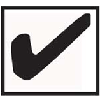
Providers must ensure their internal compliance mechanisms go beyond box ticking to avoid poor practice, says consultant and former Care Quality Commission inspector Sughra Nazir.
Last year saw a number of well-publicised cases of abuse within residential care settings, most notably at Winterbourne View hospital. Initial reactions included shock and anger and questions quickly followed in terms of the role of the regulator and commissioners. At the same time, a number of corporate providers also looked for assurance that their systems of compliance would not leave them to the same level of scrutiny and concern.
One of the questions I am frequently asked is at what point an organisation needs to consider having a compliance lead; the answer is when you start providing a service. There are very clear expectations in the current regulatory regime that the provider is responsible for ensuring the quality and safety of care and support. This sounds obvious, but ensuring best practice in compliance, whether internal or external, by individuals or teams, includes having the right people and using the right tools at the right time.
Some organisations continue to use auditors who lack knowledge of care, and whose role is to check of the presence of policies and procedures. This runs the risk of auditors not seeing the consequences or implications of their findings. For instance, on seeing a daily record suggesting a suspected urinary tract infection, an auditor with more experienced insight into service user experience and effective care response would look for ancillary evidence for example such as fluid charts, record of GP visit, or medication charts.
Credibility and credentials
Auditors need to have the credibility and credentials to understand their organisation, the services, commissioner and regulatory expectations. This means investing in more than just a one-day workshop.
To engender a degree of independence the audit person or team may sit outside the operational structure. Again there are tangible benefits to this approach but barriers to success come in the guise of comments about “ivory tower workers directing the coalface” and reluctance to engage or respond to audits by staff of lower perceived rank and power.
An approach common in other organisations is peer review. There are clear benefits to peers reviewing colleagues and benchmarking their own practice. However, to counter any risks of subjectivity, favouritism or collusion, peer monitoring relationships should be regularly reviewed, changed round and the audits subjected periodically to independent scrutiny.
In terms of the tools used and reports produced, it is essential that the methodology fits with changes in the marketplace, which means shifting thinking away from policies to outcomes. This is where checklist-style monitoring tools can struggle. Best practice organisations develop their own internal standards and expectations that go beyond compliance towards excellence.
Balancing risk
Providers should adopt a risk-based proportionate approach to frequency of monitoring activity. This balances risk whilst making optimum use of resources. Some providers continue to use a once-a-month approach, which may mean that there are unchecked risks to service user safety and well-being.
The purpose of internal compliance monitoring is to spot early warnings signs of non-compliance or poor outcomes and to assist the organisation in driving up standards. For internal compliance to be effective there must also be a mechanism in place for improvements to follow. Too often, monitoring reports land and outstanding actions are not progressed.
Accountability for improvements may be fostered for example by more directly linking monitoring reports to supervisions with managers. Motivation to improve is also critical, and the practice of making internal ratings public across all services, with the effect of naming and shaming, often does not secure the desired improvement. A more productive approach would be to incentivise staff to pursue higher ratings, using competition to lever improvement.
Raised standards means better outcomes for service users, better alignment with likely corporate values and aims, enhanced reputations with commissioners and better publicly-available regulatory reports. Internal compliance monitoring is a worthwhile investment, but get the right people, tools and time to make it work!
• Sughra Nazir is a former Care Quality Commission inspector and national provider lead, and social worker. Her organisation, Care Excellence Partnership Ltd, advises providers on quality assurance, CQC registration and compliance.
Community Care Live
The lessons care providers can learn from Winterbourne View will be under discussion at Community Care Live, our annual free event celebrating the best in social care practice, on 16 and 17 May. You can register to attend now.


 ‘Dear Sajid Javid: please end the inappropriate detention of autistic people and those with learning disabilities’
‘Dear Sajid Javid: please end the inappropriate detention of autistic people and those with learning disabilities’ Ofsted calls for power to scrutinise children’s home groups
Ofsted calls for power to scrutinise children’s home groups Seven in eight commissioners paying below ‘minimum rate for home care’
Seven in eight commissioners paying below ‘minimum rate for home care’ Children and young people with SEND are ‘valued and prioritised’ in Wiltshire, find inspectors
Children and young people with SEND are ‘valued and prioritised’ in Wiltshire, find inspectors 
 Facebook
Facebook X
X LinkedIn
LinkedIn Instagram
Instagram
Comments are closed.